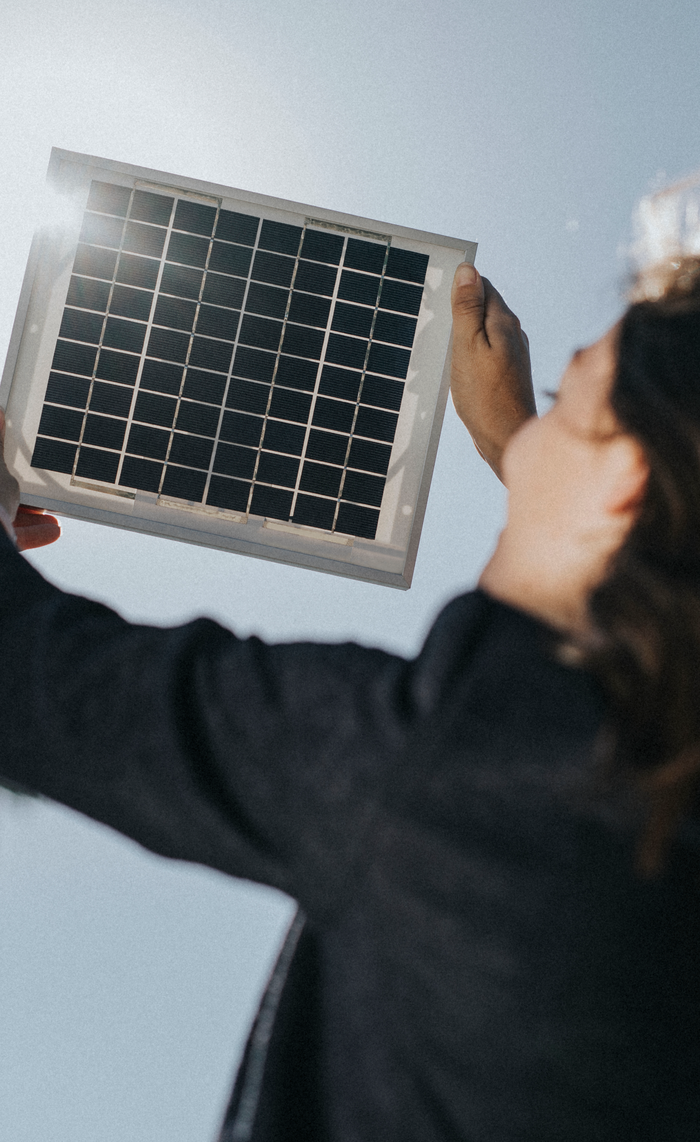+49 (0) 4101 8548181
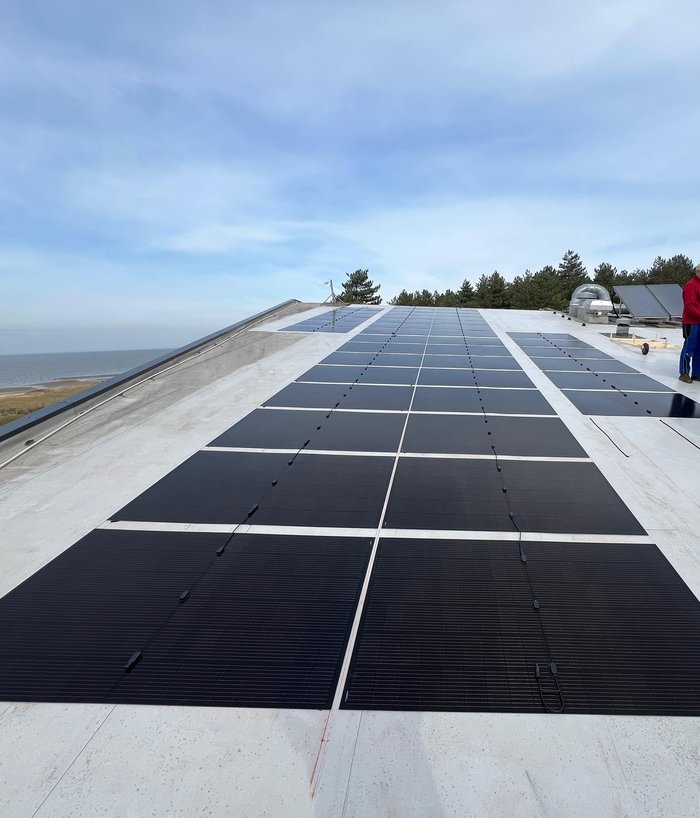
Die Lösung für Dächer mit geringer Traglast: leichte PV-Module.
Light-PV modules
Larger PV systems for private customers, farmers and commercial enterprises
SunOyster Systems also realizes PV systems for commercial roofs or hall roofs with structurally weak roofs. Thanks to our lightweight PV modules, these roofs with a weak load-bearing capacity can still generate low-cost solar power. Their low weight and simple installation make them a profitable solution for roofs on which normal PV systems cannot be installed.
This is how easy PV can be for roofs with low load reserves!
The load reserves on roofs, especially flat roofs, are often not sufficient to support normal PV with ballast (at least 50 kg/m²) or PV on roof hooks (at least 20 kg/m²). Here, gluing on our flexible lightweight PV modules with just a few kg/m² is the ultimate solution!
For roofs with low load reserves
Glued light modules from SunOyster

Our light PV modules for gluing onto roofs or façades are particularly flexible and can supply a kilowatt hour for around 5-7 euro cents. This means that commercial roofs with limited load-bearing capacity can be fitted with PV very economically. You can find one of our reference examples for lightweight modules here.
Glass-coated lightweight PV modules
Solar power despite a structurally unsuitable roof
How chic is roof?!
If a roof does not have a load-bearing capacity for normal PV modules, our glass-coated lightweight PV modules can also be used - weighing just a few kilograms per m2. Simply bonded. On PVC foil - but also on trapezoidal sheet metal, Alwitra foil, bitumen, Eternit, aluminum facades, etc. Generating roof electricity for 5 cents/kWh in Germany is very easy, even on difficult roofs.
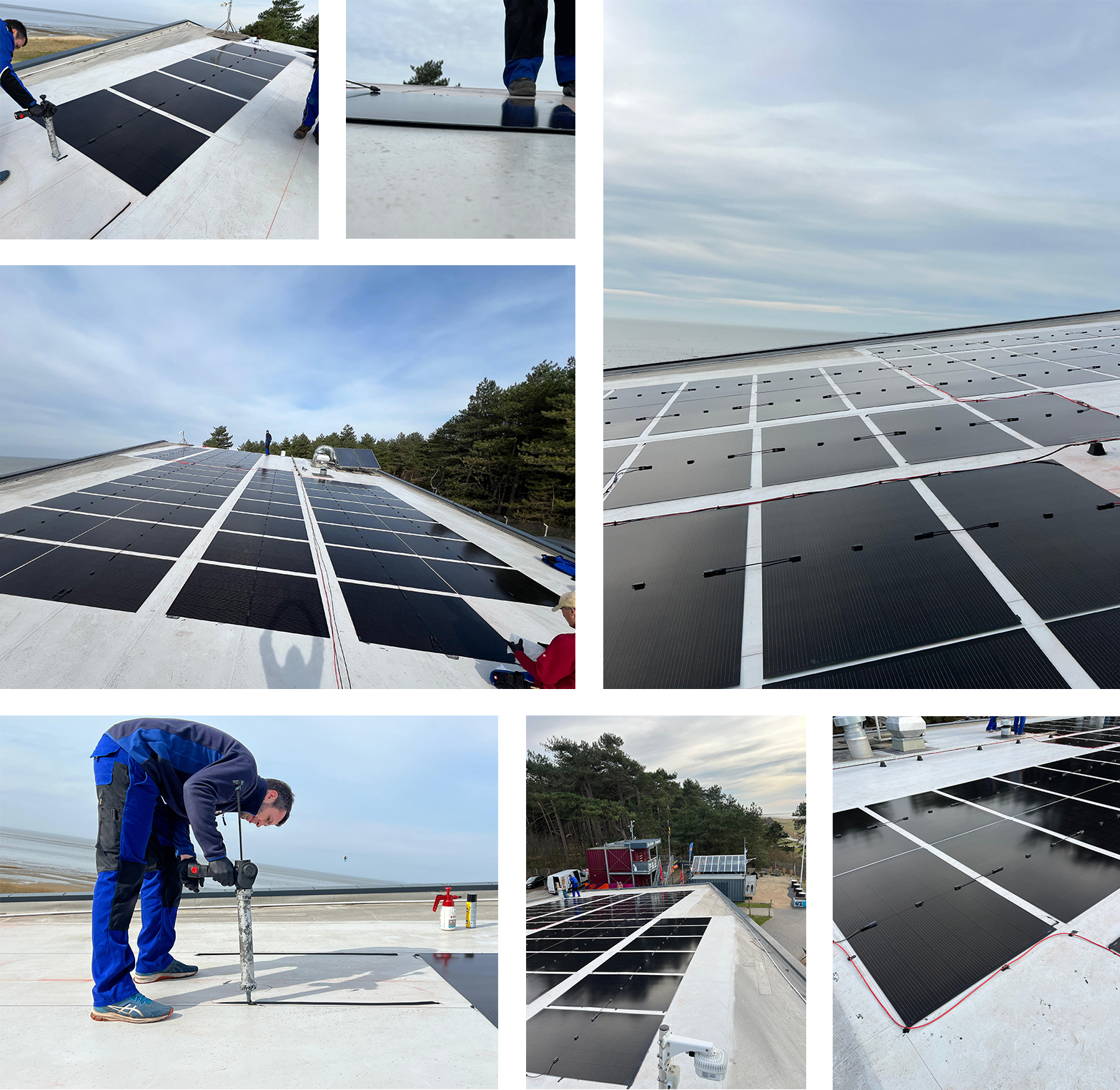
Produktinformationen
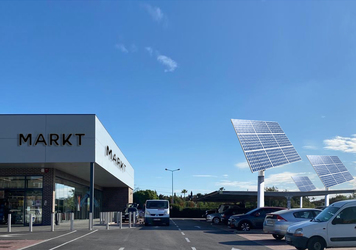
Arrange a consultation appointment with us and you will be amazed at the prospects for a renewable supply for your commercial operation: With our own products SO16 heat and especially the new SO8 heat we cover heat requirements. With our hybrid receivers of the SO8 or with pvplus as well as with our PVmovers we cover electricity requirements. In this way, we can provide the optimum mix of heat and electricity for each site. And where our own products may not be the best fit, we use the best products from other manufacturers for the greatest possible customer satisfaction. It is estimated that 40% of commercial roofs cannot support even 20 kg of additional loads. In this case, ultra-light PV modules are an interesting solution. Sunman modules have all current certifications.
Frequently asked questions
Can the ultra-light modules be installed on all roofs?
The modules can be glued on almost all straight or even curved roofs. Examples are trapezoidal sheets or sandwich roofs, bitumen or plastic foils, even facades. Sloping roofs with roof tiles are difficult, sandy surfaces are not possible. In case of doubt, a trial bond can be made with the permanently elastic adhesive. Even if the protection class of the junction box is IP 68, the modules should not be permanently in water, i.e. not in areas of the flat roof where there is permanent water. Please feel free to show us your roof.
Can individual ultralight modules be replaced if they do become defective?
In this case, the modules can be cut off again at the adhesive with a wire (similar to windshields in cars) and a new module can be glued on. To ensure that you can always get to the modules without stepping on them, we always install the modules on the roof in double rows with an aisle in between.
Do you offer financing for commercial PV systems?
With the help of established partners, and assuming sufficient creditworthiness on the part of the customer, we offer various forms of financing, in particular installment plan, leasing and infrastructure as a service, whereby the PV system does not appear on your balance sheet.
Do I get a feed-in tariff for electricity fed into the grid?
In Germany, for small PV systems on the building, one gets a modest feed-in tariff of currently effectively 8.2 euro cents per kWh. This decreases for larger systems. For commercial enterprises there is also the possibility of full feed-in - here the feed-in tariff is 13 euro cents per kWh or less for larger systems. The total investment can also be divided into a plant for self-consumption and one for feeding into the grid with higher remuneration.
The feed-in tariff is, of course, not high compared to the savings on electricity purchases (currently, even large commercial enterprises often pay well over 30 eurocents per kWh of electricity) or to the savings on gas purchases (e.g. 15 eurocents per kWh of gas). Therefore, it may be worthwhile to temporarily store the solar power in batteries, feed it into e-cars, or use it to heat your own heat storage unit using a heating rod.
Do I get funding?
In Germany, a subsidy for PV systems in the broader sense is the above feed-in tariff. In addition, photovoltaics is generally highly economical (see following question), so that no promotion is required.
How economical is ultra-light photovoltaics?
For a current example from southern Germany, the following profitability results for an annual consumption of 80,000 kWh with 80 kWp ultra-light PV, an electricity price of 40 euro cents net, a self-consumption of 70% of the solar electricity and a financing of 80% of the investment with an interest rate of 4% p.a.:
In this case, the return on investment (IRR) is 82.4%, the payback period on the equity is 0.9 years, and the payback period on the total project is 4.3 years. In other words: After less than one year, the invested equity is earned back. Over its lifetime of 25 years, the plant generates a cash flow of almost half a million euros.
What costs ultralight photovoltaic?
Due to the manufacturing process and the smaller quantities, the modules are significantly more expensive than normal modules. On the other hand, material and time can be saved in the substructure of the modules (adhesive instead of aluminum profiles). With the current high electricity prices in the industry, it is therefore still a highly economical investment.
Does ultralight PV need to be cleaned?
Over time, dirt can accumulate on the ultra-light modules, especially after a dusty summer or one with little rain. Because of the matte, slightly rough surface, this is also somewhat more than on conventional glass modules with the same slope. However, the surface made of EFTE has an important property - the lotus effect: the nature of the surface means that dirt cannot settle in the long term and is immediately loosened and washed away when it rains.
To optimize the yield by a few percentage points, the modules can be cleaned occasionally, for example twice a year. This basically works like cleaning windows: So it is best to first spray with a soft jet (not a high-pressure cleaner) to remove coarse impurities. Then treat with a soft brush and mild detergent. Finally, rinse again - ideally with decalcified water.
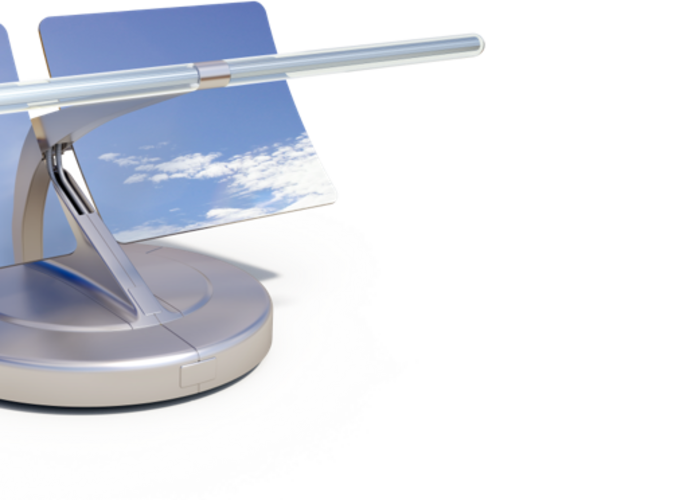
+49 (0) 4101 8548181
Mo - Fr from 8 - 16.00 am

